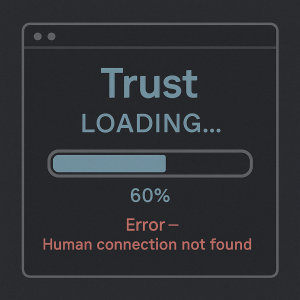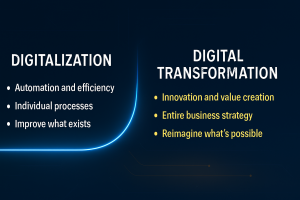
Delegation Isn’t About Letting Go. It’s About Leading Better.
True leadership isn’t measured by how much you can do, but by how much you can empower others to achieve. And yet, delegation, arguably one of the most critical skills in a leader’s toolkit, is often misunderstood, poorly executed, or completely avoided.
Despite what many believe, delegation isn’t about offloading tasks. It’s a strategic tool to multiply your impact, build team capability, and free yourself to focus on high-value decisions. But unfortunately most leaders don’t delegate effectively. They either micromanage, abdicate responsibility, or pass the wrong tasks to the wrong people.
Why Leaders Struggle to Delegate
Many high-performing professionals reach leadership roles because they’re excellent doers. But that strength becomes a trap. They’re used to getting things done themselves, faster and better. Letting go feels risky. Add in perfectionism, trust issues, or unclear role definitions, and delegation starts to feel like a gamble rather than a growth strategy.
The result often means burnt-out leaders, underused teams, and bottlenecks everywhere.
What Effective Delegation Actually Looks Like
Effective delegation is deliberate. It’s not dumping tasks, it’s transferring ownership with clarity, trust, and support. The goal is not only task completion, but capability-building.
Here’s how strong leaders delegate well:
1. Start with the Why
Explain why the task matters and how it connects to the bigger picture. When people see purpose, they engage differently.
2. Delegate Outcomes, Not Tasks
Don’t just assign a to-do. Share the expected result, the standards, and how success will be measured. Give your team autonomy on the how.
3. Match the Right Person to the Right Task
Consider skills, aspirations, and current workload. Delegation should stretch people, not set them up to fail.
4. Provide the Right Level of Support
Be available, but don’t hover. Offer guidance, resources, and check-in points without micromanaging.
5. Follow Up, Don’t Take Back
Check progress regularly, offer feedback, and course-correct early. But resist the urge to take control if things go off-track. Teach and empower instead.
6. Celebrate Ownership
Recognise initiative, effort, and improvement, not just outcomes. This builds confidence and trust for future delegation.
When Delegation Fails, So Does Leadership
Ineffective delegation isn’t a workflow issue. It’s a leadership issue. When leaders don’t delegate, they limit their impact and stall team development. They become the bottleneck their organisation is trying to remove.
But when done right, delegation transforms leadership from a burden into a force multiplier.
Great leaders don’t just manage work. They grow people. Delegation is how you get out of the weeds and into your role as a visionary and enabler. It’s not about doing less, it’s about doing what only you can do, and letting others step up with clarity and confidence.









